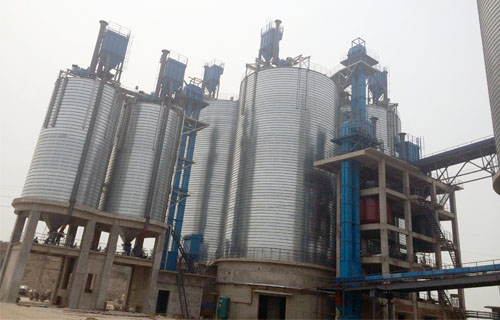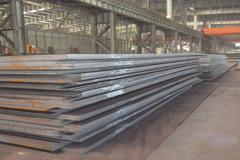Fly Ash Steel Silo
Fly ash steel silo
Our company provides a wide range of different fly ash steel silos for storing fly ash which comes from various fields. That is because the wide application of fly ash gives rise to the environmental pollution like groundwater contamination and air pollution. So fly ash steel silo is one of the perfect ways to store fly ash to prevent environmental pollution. We offer custom made fly ash silos which are specially designed according to customers’ requirements with high quality and reasonable price, moreover, our fly ash silo can easily convey and process fly ash. Our fly ash silo adopts advanced technology and the raw material is high-quality steel coils. It comes with proper internal coating support to provide the most durable tanks.

Fly ash steel silo advantages
Choose our fly ash steel silo, you will get more than you expect, the advantages are as follows:
- Short construction term and long working life, easy to installation, low investment and less maintenance.
- Improves the segregation, strength, and ease of pumping concrete, ability to utilize higher grade coatings.
- Complete structural support steel and access platforms.
- Meeting special requirements with excellent performance and high quality steel silo.
How to clean fly ash steel silo?
- First, when a fly ash silo is constructed, some temporary warning signs should be set up in the construction site to warn irrelevant people not to enter.
- When fly ash gets into the silo seal the pipe, and tie the wire up, set up warning signs.
- When the silo is without fly ash, put the downstream equipment such as the bottom of the base into the maintenance position.
- Place library lighting lamps into the fly ash silo from the hole in the middle of the top, the cleaning staff should not be exposed to lighting tools and lines.
- During the fly ash silo cleaning process, the ratio for the number of people outside and in the silo should be 2:1. Some professional staff should play a role of monitoring outside of the fly ash silo.
- Construction workers can enter the silo after the safety of base stacking and the ladder’s stability have been confirmed with the necessary protective equipment like anti-dust masks, goggles, safety shoes, and safety helmets.
- It is necessary for all the staff to fasten two safety ropes when entering the fly ash silo, one fixed in the library outside the dust collection device support, the other fixed on the ladder.
- When starting cleaning the silo, the feed rate of the mill should be based on the flow; if the flow is too small, put ash in the upper part of the rotor balance pipe, and put down the fly ash mixed with the mixed material to do the mixture.
- To use explosives to clean up the fly ash silo is prohibited. If there are special circumstances, special safety measures should be developed before the construction.
What is fly ash?

Fly ash, also called coal ash or "pulverized fuel ash" in the United Kingdom, is one of the coal combustion products, composed of the fine particles that are driven out of the boiler with the flue gases. There are many forms of fly ash chemically and physically, which depend on the fuel combustion and treatment methods type. Typical fly ash contains a significant amount of silicon dioxide and calcium oxide, which make it frictional and abrasive. Fly ash is widely used in different fields:
- Due to the pozzolanic properties, fly ash is used as the replacement for Portland cement in concrete.
- Grout and flowable fill production.
- Embankment and some road constructions like road sub base.
- Waste stabilization and solidification.
- Cement clinkers production like a substitute material for clay.
- Mine reclamation.
- Stabilization of soft soils.
- As Aggregate substitute material (e.g. for brick production).
- Mineral filler in asphaltic concrete.
- Agricultural uses: soil amendment, fertilizer, cattle feeders, soil stabilization in stock feed yards, and agricultural stakes.
- Loose application on rivers to melt ice or roads and parking lots for ice control, etc.


